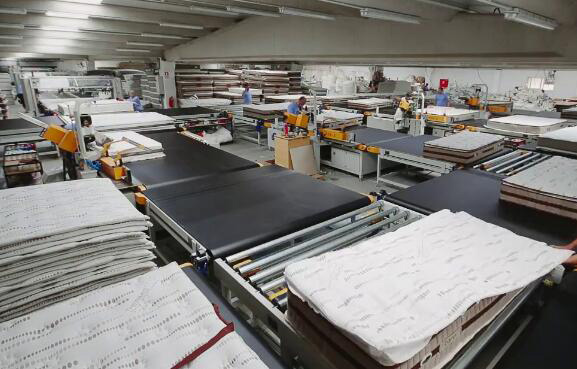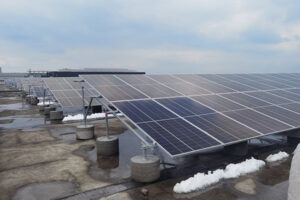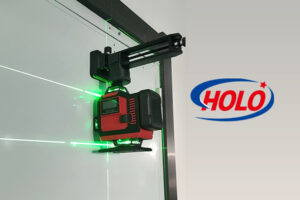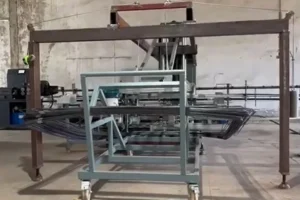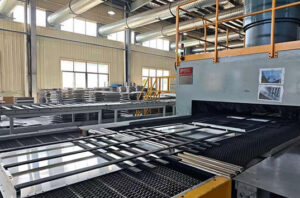How It Works
A typical pocket spring production line begins with the wire feeding process. High – quality steel wires are precisely fed into the coiling machine. The coiling heads, often electronically controlled for enhanced accuracy, wind the wire into the characteristic spring shape. For example, in some models like the LR – PS – LINE – 95P – HX2/HF2, there are two electronically controlled coiling heads, which can work simultaneously to increase production speed.
After coiling, the springs need to be encapsulated. This is where the fabric conveying mechanism comes into play. A cloth is carefully conveyed along a predetermined path, and the spring compressing and conveying mechanism then presses and inserts the springs into the cloth. Subsequently, the welding encapsulation mechanism welds the cloth. In innovative designs, the welding seams are shaped in a way that not only separates the springs but also encapsulates them effectively in the cloth. Some production lines use ultrasonic cutting devices for pocket spring strings, which can make clean and precise cuts, ensuring the integrity of each pocket spring unit.
Advantages of Pocket Spring Production Lines
One of the primary advantages is the high production efficiency. Machines such as the LR – PS – LINE – DL can produce up to 120 pairs of pocket springs per minute. This high output allows mattress manufacturers to meet the growing market demand in a timely manner.
Moreover, pocket spring production lines offer great precision. The use of servo – motor control, as seen in many modern lines, ensures that the springs are of consistent size and shape. This precision is crucial for the overall quality and performance of the mattress. For instance, the consistent spring quality leads to a more even weight distribution on the mattress, providing better support for the sleeper.
These production lines also contribute to cost – effectiveness. By reducing material waste through accurate coiling and cutting processes, and with high – speed production reducing labor costs per unit, manufacturers can offer pocket – spring mattresses at more competitive prices.
Applications
The pocket springs produced by these lines are mainly used in the mattress industry. Mattresses with pocket springs are highly sought – after by consumers due to their ability to provide individualized support. Each pocket spring can move independently, contouring to the body’s shape and minimizing motion transfer, which means that one person’s movement on the mattress will not disturb the other.
However, the applications are not limited to mattresses. Pocket springs can also be used in some high – end upholstered furniture, such as sofas and recliners, to enhance the comfort and durability of the seating.
